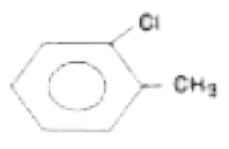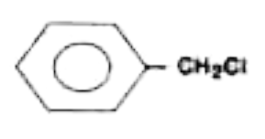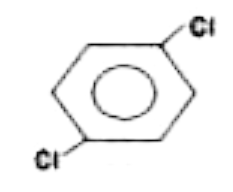Which of the following alkyl halides is hydrolysed by SN1 mechanism?
CH3Cl
CH3CH2Cl
CH3CH2CH2Cl
(CH3)3CCl
The correct Answer is:D
To determine which alkyl halide is hydrolyzed by the SN1 mechanism, we need to analyze the stability of the carbocations that would form during the hydrolysis process. The SN1 mechanism involves two main steps: the formation of a carbocation intermediate and the nucleophilic attack on that carbocation.
1. Identify the Alkyl Halides: List the given alkyl halides. For this example, let's assume we have the following options:
- A: CH3Cl (methyl chloride)
- B: CH3CH2Cl (ethyl chloride)
- C: CH3CH2CH2Cl (n-propyl chloride)
- D: (CH3)3CCl (tert-butyl chloride)
2. Determine the Carbocation Formed:
- Option A: CH3Cl → CH+3 (methyl carbocation)
- Option B: CH3CH2Cl → CH3CH+2 (ethyl carbocation)
- Option C: CH3CH2CH2Cl → CH3CH2CH+2 (n-propyl carbocation)
- Option D: (CH3)3CCl → (CH3)3C+ (tert-butyl carbocation)
3. Evaluate Carbocation Stability:
- Carbocation stability increases with the degree of substitution:
- Tertiary (3°) > Secondary (2°) > Primary (1°) > Methyl (0°)
- Option A: Methyl carbocation is very unstable.
- Option B: Ethyl carbocation is less stable than a secondary carbocation.
- Option C: n-Propyl carbocation is also primary and unstable.
- Option D: Tertiary carbocation is the most stable.
4. Conclusion: Since the SN1 mechanism favors the formation of stable carbocations, the alkyl halide that will undergo hydrolysis via the SN1 mechanism is the one that forms the most stable carbocation, which is option D: (CH3)3CCl (tert-butyl chloride).
Final Answer:
The alkyl halide that is hydrolyzed by the SN1 mechanism is Option D: (CH3)3CCl.
- A: CH3Cl (methyl chloride)
- B: CH3CH2Cl (ethyl chloride)
- C: CH3CH2CH2Cl (n-propyl chloride)
- D: (CH3)3CCl (tert-butyl chloride)
- Option A: CH3Cl → CH+3 (methyl carbocation)
- Option B: CH3CH2Cl → CH3CH+2 (ethyl carbocation)
- Option C: CH3CH2CH2Cl → CH3CH2CH+2 (n-propyl carbocation)
- Option D: (CH3)3CCl → (CH3)3C+ (tert-butyl carbocation)
- Carbocation stability increases with the degree of substitution:
- Tertiary (3°) > Secondary (2°) > Primary (1°) > Methyl (0°)
- Option A: Methyl carbocation is very unstable.
- Option B: Ethyl carbocation is less stable than a secondary carbocation.
- Option C: n-Propyl carbocation is also primary and unstable.
- Option D: Tertiary carbocation is the most stable.
The alkyl halide that is hydrolyzed by the SN1 mechanism is Option D: (CH3)3CCl.
Similar Questions
Knowledge Check
Which of the following is an aryl alkyl halide.
A B
B C
C DNone of these
DNone of these
Which of the following halides cannot be hydrolysed?
View SolutionWhich of the following alkyl halides undergoes the fastest SN1 reaction ?
View SolutionWhich of the following alkyl halides is iso -butyl bromide ?
View SolutionWhich of the following compound is most rapidly hydrolysed by SN1 mechanism?
View SolutionWhich of the following halide undergoes in hydrolysis via SN1 reaction?
View SolutionWhich of the following alkyl halides on hydrolysis gives a glycol?
View SolutionWhich of the following halides of group 15 is not hydrolysed ?
View Solution
